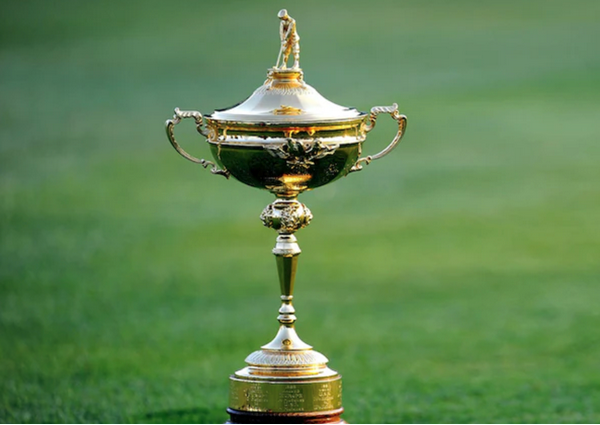The Ryder Cup stands as one of the biggest golf occasions worldwide. Every two years, twenty-four top players in Europe and the United States compete for this sought-after golf cup. Millions of viewers watch this competition every time because it’s packed with suspense, tension, amazing gameplay, and community spirit. This event stays loyal to the spirit of its originator, Samuel Ryder. In this read, we will share loads of facts about the competition.
Early Years and Format Changes
The Ryder Cup blends several forms of the sport. The players on each side are chosen by professional golf associations.
Origins
The competition was launched by Sam Ryder, a British merchant. After a long and stressful career, he started to experience health issues. So, a friend suggested he should try some physical activity to fix these issues and improve his general well-being.
Unexpectedly, Samuel became truly obsessed with the game and decided to sponsor tournaments at his golf club. Luckily, his pockets were deep enough to afford it. In 1926, he sponsored his first major match between England and Scotland. A year later, he announced that he would be launching a trophy for a golf tournament between British and American players. The Ryder Cup was born.
Evolution
At first, the competition was held in the form of match play, with four players taking alternate strokes during the first day and single games during the second day. Then, in 1963, a full day of four-ball play was added to the schedule, with each player playing his own ball. Every winning match adds one point to the team’s score. The competition has no prize money, just the trophy and the burst of glory. In 1979, the British team started to expand its lineup by adding players from other European nations (we will tell more in the following section).
Iconic Matches and Moments
(Source: https://golf.com/news/ryder-cup-history-results-2023/)
The Ryder Cup boasts loads of memorable moments and games. For example, the 1957 edition featured the only victory of Great Britain between 1933 and 1985. The team was led by Dai Rees, the five-time team captain.
The 1979 edition of the tournament was marked by adding players from other European countries to the Great Britain team. The aim was to make the team more competitive. However, the U.S. crushed their opponents with a final score of 17:11.
The 1999 edition marked the unprecedented comeback of the American team after a long winning drought. The Euros seemed to be cruising towards an easy victory; however, the course of the competition changed dramatically during its last day. The Americans won the cup by a margin of 14 ½ to 13 ½. It was epic!
Impact on Golf
Of course, this cup has had a major impact on golf as a sport. It attracted new crowds to this previously underestimated game and boosted interest in the sport among youngsters. With the development of the Ryder Cup, golf became more widely known throughout Europe.
On top of this, the organizing committee of the competition launched an environmental initiative called the Ryder Cup Green Drive. It supports the implementation of sustainable practices during golf tournaments in order to slow down climate change and safeguard the environment.
The campaign is aimed at raising social responsibility and climate change awareness among the golf community. It focuses on implementing changes in unhealthy approaches to organizing golf competitions. The Ryder Cup Green Drive operates together with a partner, an NGO called GEO Foundation.
(Source: https://www.golftraveller.com/explore/the-history-of-the-ryder-cup)
Recent Tournaments
Past venues of the tournament include such amazing locations as:
- Rome, Italy (2023)
- Kohler, Wisconsin, the U.S. (2021)
- Guyancourt, France (2018)
- Chaska, Minnesota, the U.S. (2016)
- Perthshire, Scotland (2014)
All the events were literally flavors of the year for golf lovers and aficionados of golf betting.
Media and Technology Influence
Recent technologies have had a strong impact on the competition. For example, viewer experience has reached a whole new level after the introduction of real-time data and interaction. Also, smart, real-time decision-making for operations is made possible by a visualization platform that integrates data sources from across the course.
The event is being broadcast live by both TV channels and digital platforms. Of course, famous vloggers also launch live streams.
Future of the Ryder Cup
Of course, the Ryder Cup has had its share of issues and controversies, like any major sporting event. Luckily, the tournament is still alive and kicking. The cup faces both chances and challenges in the future. Definitely, the competition has a strong foundation, but its future success will depend on how well it can adapt to changes linked to the development of modern technologies.
Future Venues and Dates
- In 2025, the Ryder Cup will take place in Farmingdale, New York. The Bethpage Black golf course is considered one of the most challenging courses in the country.
- The amazing Adare Manor in Ireland will host the 2027 edition of the Ryder Cup. The property looks like a fairy castle surrounded by lush green fields.
- The Hazeltine National Golf Club in Chaska, Minnesota, has already hosted the tournament in 2016. It was a blast! No wonder the venue is more than happy to provide its amenities for the Ryder Cup 2029.




